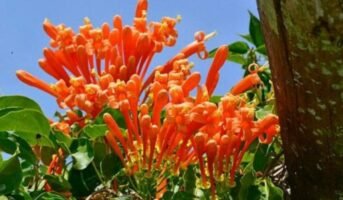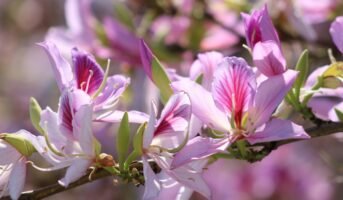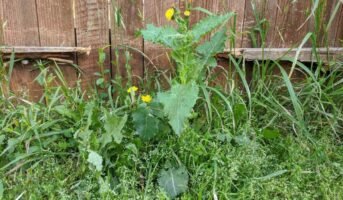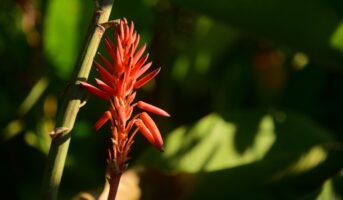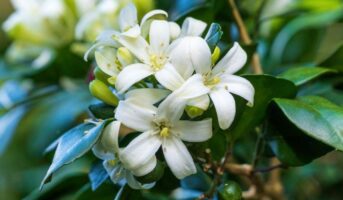The Garcinia Indica fruit, also known as Punampuli in Malayalam, Kokum in Hindi and Murgal in Tamil, is native to the Western Ghats and the West Coast of the Indian subcontinent, from the hills of Matheran to the east of Mumbai (Bombay) to the southernmost tip of Kerala.
See also: Mango: What makes India’s national fruit so special?
What is Kokum?
Kokum is a tropical minor fruit crop grown all across India. Also known as kokum butter tree, brindonia tallow tree, and mangosteen oil tree, this fruit-bearing tree has plenty of industrial, culinary, and pharmaceutical uses. Kokum is not consumed as a fresh fruit but is often processed into drinks or used as a spice.
Garcinia Indica or Kokum: Key facts
| Common name | Kokum, murgal, punampuli |
| Botanical name | Garcinia indica |
| Family | Clusiaceae |
| Height | 10-20m |
| Soil | Well-drained soil |
| Rain | 1000mm-2000mm |
See also: What is Hibiscus and how to grow it in your home?
Garcinia Indica or Kokum: Features
The tree can reach a height of 20 m; however, it grows very slowly (66 ft). As a rule, though, its height is closer to 10-15 metres (33-50 feet), and its trunk is often thin and low-branching, supporting a densely foliaged pyramidal crown.
The bark is usually a dark grey or brown colour and is scaly, rough, and sometimes mottled by lichens, mosses, and algae that flourish in the tree’s wet environment. It has small, pink flowers with thick, waxy petals.
These flowers, which bloom throughout the dry winter season, are borne straight on the stems, either singly or in clusters of up to four.
When unripe, the fruit is a greenish colour, but when mature, it turns a deep purple-red.
How to grow Kokum plants?
Typically, new plants are grown from seed and cuttings, with cuttings from known female and male trees seen as the ideal method for establishing a healthy male-to-female ratio for successful pollination and fruit production. The seeds take a long time to germinate, and it takes the young trees about seven to eight years before they begin to blossom and produce fruit. Every year, each tree usually makes anywhere from 0 kg to 26 kg of fruit.
Best results are achieved in full to partial sun and on moderately acid to neutral clay and loam soils (pH range: 5.0 to 7.5). It does well even on soils that are constantly moist or waterlogged.
Garcinia Indica or Kokum: Care tips
Bamboo sticks should be used as stakes for young plants. Remove any new shoots that appear on the main stem just above the bud/graft junction regularly. Water new seedlings throughout dry periods and summer months for the first two to three years if at all possible.
Weather conditions and soil composition
Garcinia Indica, a type of tropical fruit, does particularly well in the hot, sticky temperature and moderate amounts of rainfall that are typical of coastal areas (between 1,000 and 2,000 millimetres).
Workable soils include those that are lateritic, alluvial, or medium-deep and have good drainage.
Irrigation
Garcinia indica is grown as a fruit crop and depends primarily on rain for sustenance; the only time additional watering is necessary is in the summer or during extended periods of dry weather in the first two to three years of the plant’s life.
Garcinia Indica or Kokum: Pests
There have been no reports of Garcinia indica being affected by major pests or diseases, so it usually doesn’t need any plant protection. But leaf miners and mealybugs eat the fragile leaves and ruin the plant. These pests can be stopped by spraying the plants with phosphamidon or dimethoate at a concentration of 0.03%.
How to use Kokum?
There are many different uses of Kokum. This plant is also used for many medicinal purposes. Here are some of the primary applications of Kokum.
Garcinia Indica or Kokum: General uses
- The tree is attractive, with a dense canopy of green foliage and sensitive, young leaves with a reddish tint. Hence, it can be planted as an ornamental plant.
- It is used to make chocolate and sugar candies.
Garcinia Indica or Kokum: Medicinal uses
- Its oily extract is put to use in suppositories and ointments.
- It can be used in a variety of cosmetics, including those designed to treat acne and revitalise the skin.
- It is rich in nutrients and antioxidants.
- Some studies have found that hydroxycitric acid, found in the fruit rind, can cause significant changes in lipid metabolism.
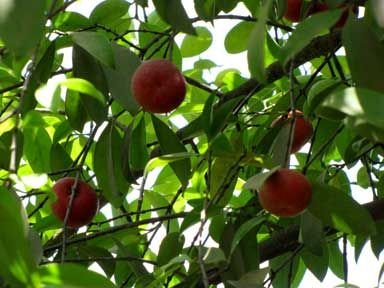
Source: Pinterest
Garcinia Indica or Kokum: Toxicity
Kokum trees are not considered toxic to either animals or humans. It is absolutely safe to plant anywhere you want.
FAQs
Is Garcinia indica or kokum used for weight loss?
According to reports, kokum causes a significant reduction in body fat and weight.
Does Garcinia indica help with thyroid problems?
Yes, you can take kokum juice for hypothyroidism.
Housing News Desk is the news desk of leading online real estate portal, Housing.com. Housing News Desk focuses on a variety of topics such as real estate laws, taxes, current news, property trends, home loans, rentals, décor, green homes, home improvement, etc. The main objective of the news desk, is to cover the real estate sector from the perspective of providing information that is useful to the end-user.
Facebook: https://www.facebook.com/housing.com/
Twitter: https://twitter.com/Housing
Email: [email protected]


